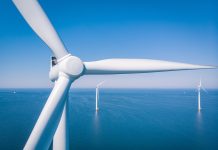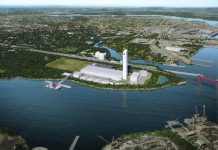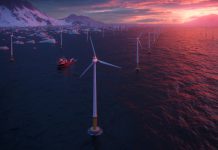When a decades-old company completely revises its entire business model with the goal of making the world a better place, it’s important to point out just how rare that is.
But Ørsted began that journey 10 years ago when it realized a drastic change was not only important, but paramount, according to Francis O’Sullivan, senior vice president of strategy with Ørsted Onshore North America.
“A decade ago, Ørsted was a large fossil fuel energy company that significantly contributed to Europe’s greenhouse gas emissions,” he said. “Yet, in a world where the sea levels are rising, natural disasters are becoming more extreme, and glaciers are melting, Ørsted realized that its business structure wasn’t sustainable. The company recognized that it had a unique ability as a major energy provider to address climate change by investing in carbon-neutral energy sources. As Ørsted has moved to the U.S. market, it has brought its cornerstone technologies (offshore wind, onshore wind and solar P.V.) to shape the broader American energy landscape. After one of the most impressive and successful business transformations, Ørsted became the most sustainable company in the world in 2020.”
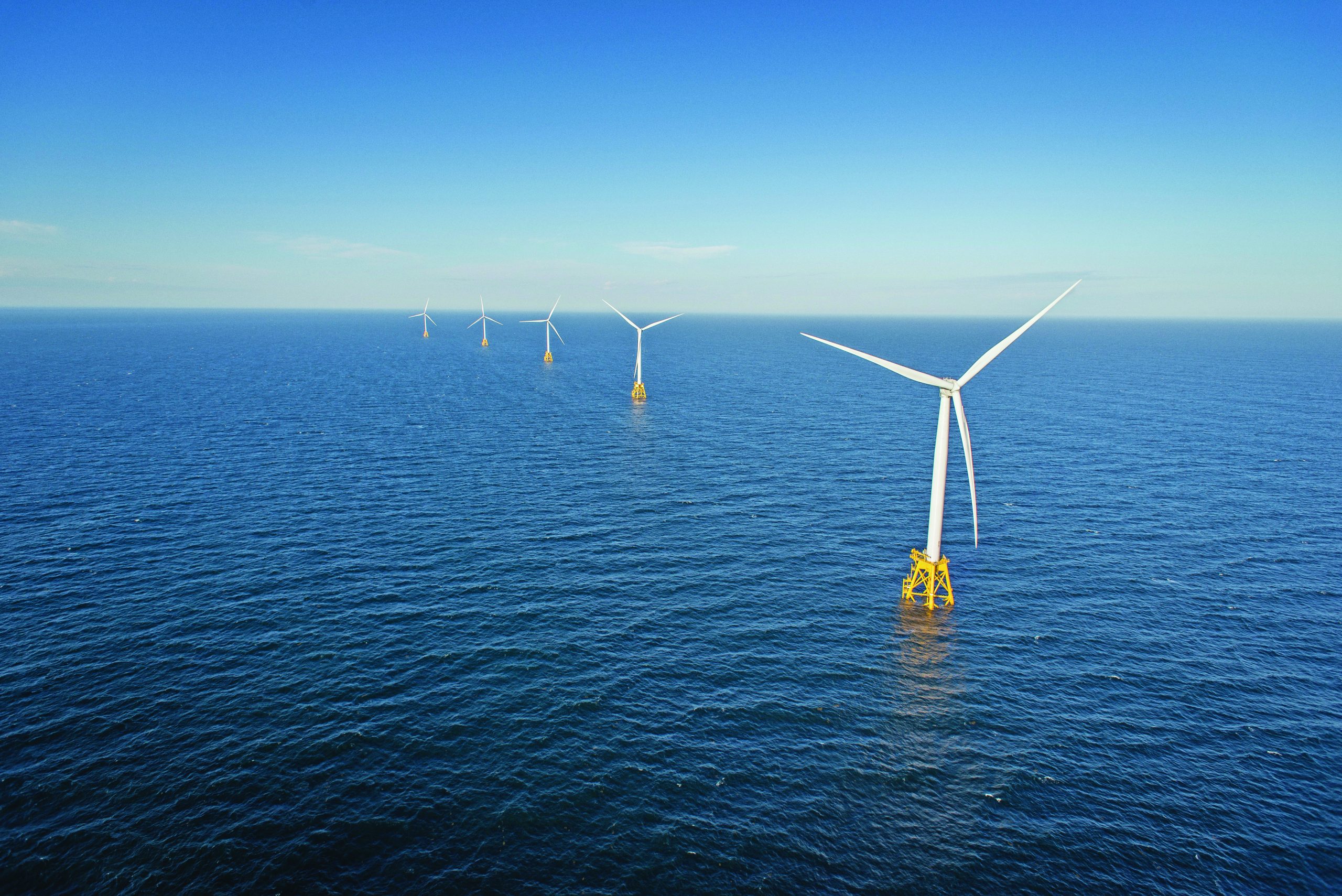
Green-Energy Portfolio
Since that time, Ørsted has developed an impressive renewable energy portfolio across the globe, and it is making major inroads in the U.S. market as well, officially rebranding itself from DONG Energy to Ørsted in 2017, according to O’Sullivan.
“We have made significant progress in living up to our new namesake,” he said. “Since 2006, we have reduced our coal consumption by more than 80 percent and reduced our greenhouse gas emissions by 86 percent. Renewables account for 89 percent of our energy generation today. In January of 2020, Ørsted was recognized for our transformation when ranked the world’s most sustainable company in the Corporate Knights Global 100 index.
For the second year in a row, CDP also recognized the company as an A-List climate leader. By outperforming more than 7,300 global companies with billion-dollar revenues, Ørsted proved that our strategic and fundamental business transformation from fossil fuel to green energy could make an environmental difference while remaining highly profitable.”
Ørsted is the global leader in offshore wind development, with more offshore wind farms than any other developer in the world, according to O’Sullivan.
“By 2022, we expect to have 9.9 GW of offshore wind capacity stemming from developments across Europe, the U.S., and Taiwan,” he said. “We entered the U.S. market in 2015 with our trademark offshore developments and have since expanded our portfolio to include utility-scale onshore wind, as well as PV and energy storage, making us the first dedicated pan-renewables company in the U.S. market. In the U.S. alone, we have the potential to deliver clean energy to the seven states on the East Coast that have committed to building more than 15 GW of offshore wind capacity by 2025. We operate the Block Island Wind Farm, America’s first offshore wind farm, and have been awarded over 2,900 MW of capacity through five offshore projects.”
Onshore Assets
While on the onshore side of wind energy, Ørsted operates 1.7 GW of wind assets in the U.S, according to O’Sullivan.
“By 2025, we aim to have 5 GW of onshore wind and solar capacity in our portfolio — and we’re just getting started,” he said.
As the largest offshore wind developer globally, Ørsted has provided wind energy as a reliable energy source throughout Europe for decades, according to O’Sullivan. This resource — both onshore and offshore — has quickly become a strategic cornerstone of the company’s diverse and flexible energy portfolio in the U.S.
“With a robust and diverse pipeline of projects – both from a regional and technology perspective – Ørsted has built a strong North American platform to complement its existing footprint across Europe,” he said. “By 2025, we aim to have 5 GW of onshore wind, solar, and storage capacity across the country, in addition to 15 GW of offshore wind capacity globally.”
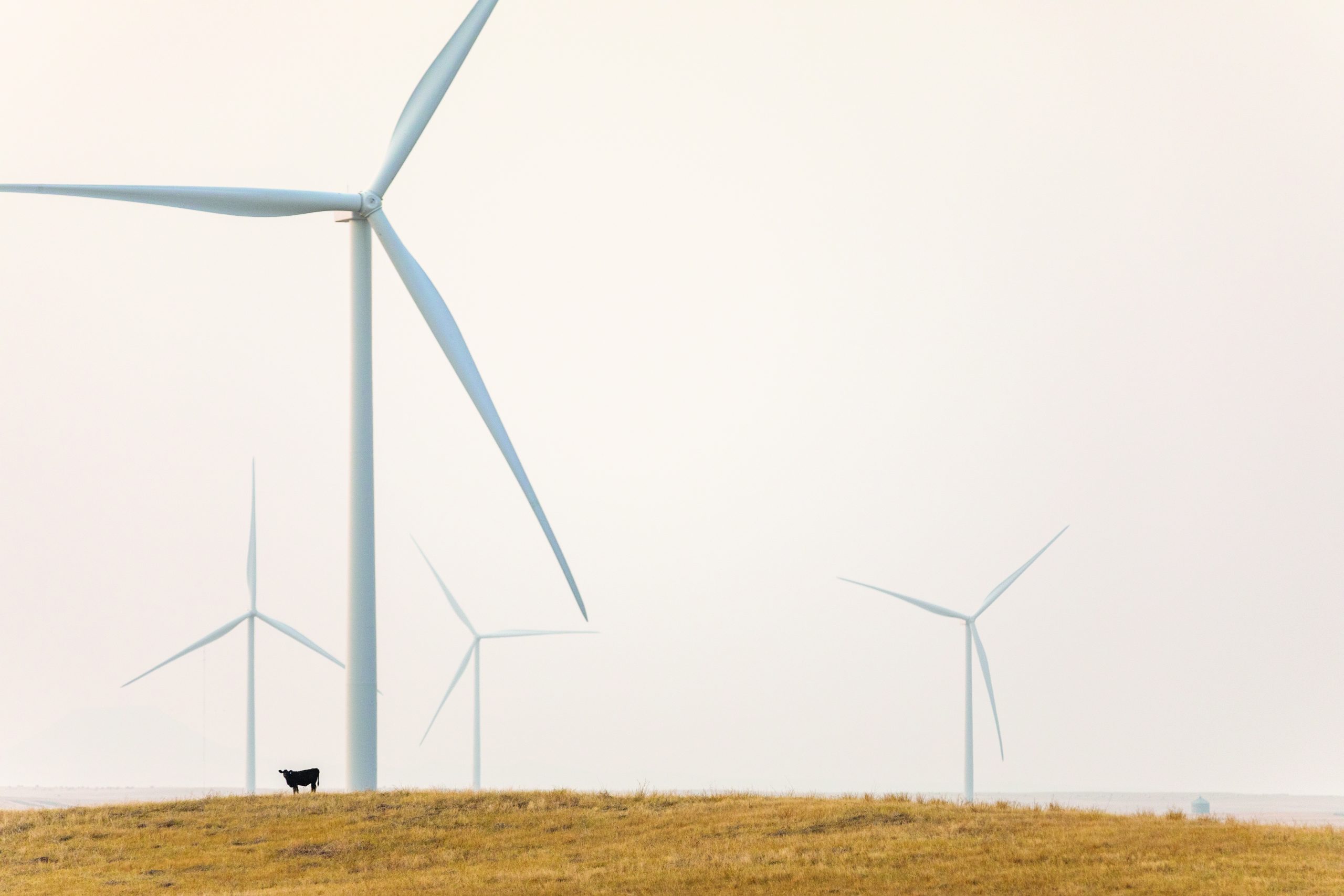
In 2020 alone, projects Ørsted has added to its pipeline include:
- Plum Creek Wind Farm: In June 2020, Ørsted completed its 230-MW Plum Creek project. The wind farm consists of 82 turbines, and its location in Wayne County represents the companies first parlay into resource-rich Nebraska — a growing market for renewable energy and among the top five states for wind power, according to the American Wind Energy Association.
- Sage Draw Wind Farm: In April 2020, Ørsted completed its Sage Draw Wind project, a 338-MW wind farm that straddles Garza and Lynn counties in West Texas. Positioned in oil-rich West Texas, Ørsted’s Sage Draw is an example of how the renewable energy industry and more traditional oil and gas providers can coexist to reduce the area’s broader carbon footprint.
- Willow Creek Wind Farm: In September 2020, Ørsted made significant strides on its Willow Creek wind farm, completing the 103-MW project in Butte County, South Dakota.
- Western Trail Wind: Also, in September 2020, Ørsted made its final investment decision on Western Trail Wind, the company’s largest onshore wind project to date.
- Haystack Wind Farm: In October 2020, Ørsted expanded its footprint in the Southwest Power Pool with the acquisition and final investment decision of Haystack Wind in Wayne Country, Nebraska.
- Muscle Shoals Solar Project: In July 2020, Ørsted continued to expand its solar footprint via the acquisition of the 227-MW Muscle Shoals solar project in Colbert County, Alabama.
Old 300 Solar Center: In December 2020, Ørsted took its final investment decision on the Old 300 Solar Center in Fort Bend County, Texas. - Permian Energy Center: Throughout 2020, Ørsted made significant headway on its Permian Energy Center, the company’s first start-to-finish utility-scale solar and battery storage project. The project sits on more than 3,600 acres in Texas’s Permian Basin and is designed to hold nearly 1.3 million solar modules.
Along with Ørsted’s major onshore projects, for offshore, Ørsted in June 2020 constructed and installed the first offshore wind turbines in U.S. federal waters on behalf of Dominion Energy’s Coastal Virginia Offshore Wind project. In 2020, Ørsted also announced the opening of the U.S. Innovation Hub in Providence, Rhode Island, to identify, foster, and finance enterprises related to offshore wind. The Hub is focused on next-generation technology and related innovation in the offshore wind energy field. The Hub is dedicated to leveraging external innovations to advance renewable energy.
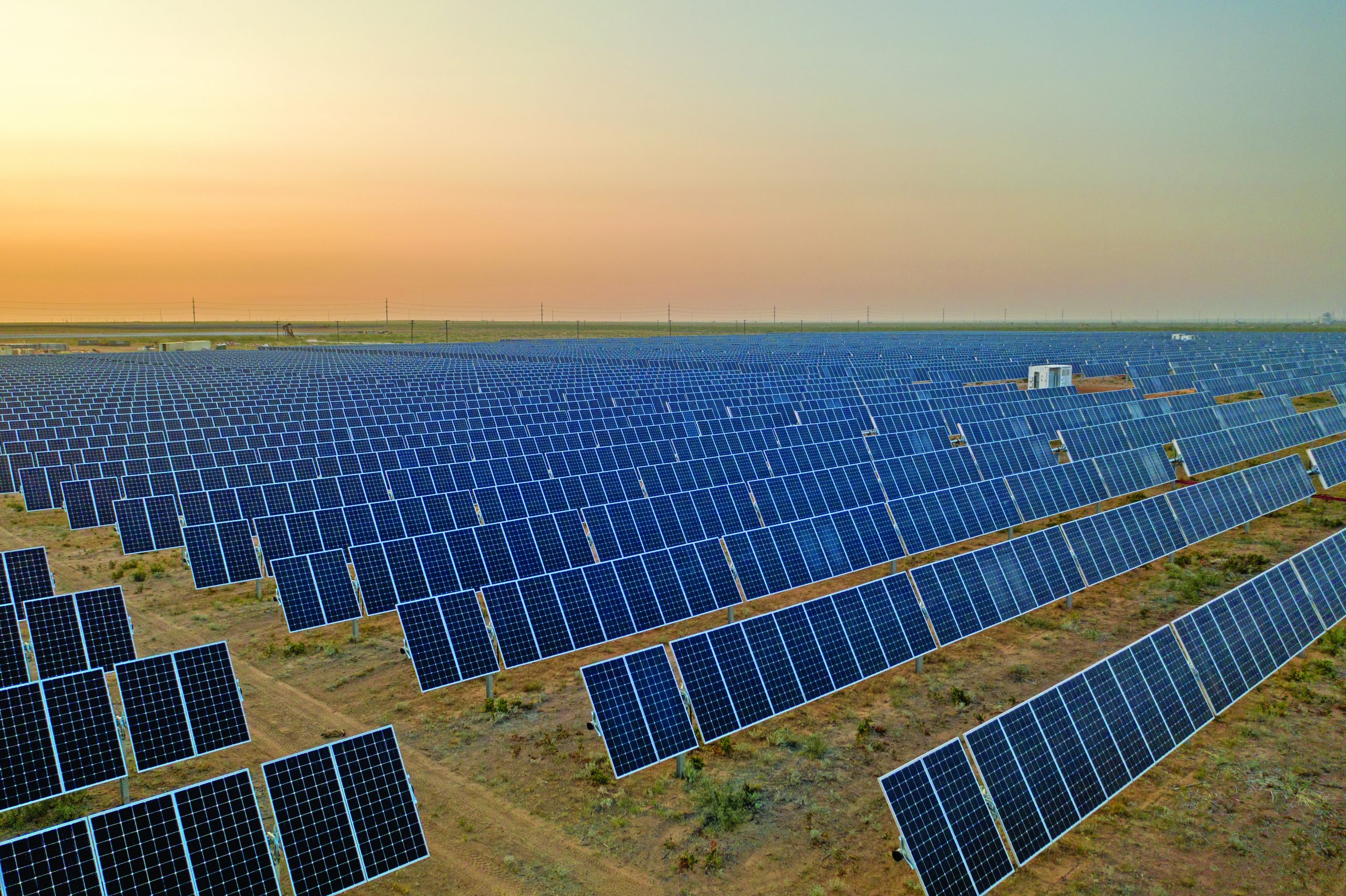
Offshore Potential
That advancement is made even more incredible by the fact that only a few short years ago, only a single state was interested in building an offshore wind farm, according to O’Sullivan.
“Today, Ørsted has offshore wind contracts with states from Rhode Island down to Maryland and onshore wind projects in Texas, Nebraska, and South Dakota,” he said. “States have started to set ambitious targets for green-energy production as governments have realized the nearly limitless wind-energy potential. We are here to help make the transition to a greener future.”
Ørsted is on a mission to maintain a uniquely robust and diverse energy portfolio, according to O’Sullivan, where the company is striving to make the right solution available by combining energy resources in the most efficient, cost-effective, and reliable way possible to meet the system’s needs. This is especially true in break-through markets such as Texas, where oil and gas have traditionally reigned supreme, using the state’s vast natural resources — in this case, the wind and sun — to drive Ørsted’s vision of a green-powered world.
“Ørsted also recognizes that, as the U.S. economy continues to evolve, wind and solar power are creating the careers of the future,” he said. “The U.S. currently faces an unprecedented economic crisis, making job creation as essential as ever. Post-pandemic, Ørsted believes that green energy will pave a path to economic recovery in the wake of a downturned economy. Across the U.S., Ørsted is investing in large infrastructure projects that require a network of domestic suppliers, and in some cases, an overhaul to the current manufacturing facilities. Ørsted is proactively seeking to stimulate local economies and create jobs.”
Supporting Clean-Energy Jobs
With more than 120,000 U.S. workers in wind-powered careers, Ørsted has pledged to support this continued job growth with its project portfolio as well as through direct community engagement, according to O’Sullivan.
And O’Sullivan emphasized that part of that growth involves Ørsted working diligently with its customers in order to provide reliable and stable energy solutions.
“We work closely with our customers and developers to fully understand and inspect every aspect of the pipeline, which helps us ensure minimal disruptions and delays when developing the project and allows us to identify any issues quickly should they come up,” he said. “Starting in June 2019, Ørsted began working with a customer headquartered outside the U.S. who was struggling to capitalize on the robust virtual PPA market in the U.S. due to the mark-to-market accounting challenges. Alongside that corporation’s appointed third-party adviser, we developed a suite of structural solutions that ultimately enabled the customer to lock in a competitive price for renewable energy while minimizing their market exposure and their financial exposure to volatile power prices. Collaboration, both internal and external, proved tantamount in finding the solution that best fit the customer’s needs.”
Cultural and Environmental Shift
It is important to remember that it wasn’t too long ago that Ørsted, formerly DONG Energy, was one of the most fossil-fuel-intensive energy companies in Northwest Europe.
However, a growing societal focus on climate change, the launch of the EU 2020 energy policy goals, and a growing consensus about the need to transform global energy systems led Ørsted in 2008 to formulate a radical vision of transforming its business model from fossil fuels to green energy, according to O’Sullivan.
“Understanding the limitations of the Earth’s finite resources, such as oil and gas, Ørsted was inspired to rethink its business strategy and henceforth embarked on its impressive transformational journey,” he said.
In 2017, DONG Energy rebranded to Ørsted with a revitalized commitment to shift its power source by developing green, independent, and economically viable energy systems, according to O’Sullivan.
“Ørsted’s decision to divest from fossil fuels and its commitment to be carbon neutral by 2025 and have a carbon-neutral footprint by 2040 has revolutionized how big energy companies think about decarbonization and their ability to limit global warming,” he said.
Looking To the Future
Today, as one of the world’s leading renewable energy companies, Ørsted supplies more than 15 million people with clean energy, according to O’Sullivan. The company’s goal is to increase this figure to 30 million by 2025, deliver the future of energy, and be a trusted partner in the communities it serves.
“Ørsted’s vision is to transform the way we power the world,” he said. “We’ve been in the U.S. for about five years, and it’s a huge opportunity both for Ørsted and for Americans who can benefit from the green-energy advancements made in Europe. The U.S. is forecasted to experience significant renewables growth in the coming years. Wind and solar energy are cost-competitive and one of the fastest-growing sectors of the economy. Our portfolio diversity will provide us with an excellent base to offer the right solutions for the expanding customer landscape. We will continue to be open to opportunities that are complementary to our existing footprint.”
















